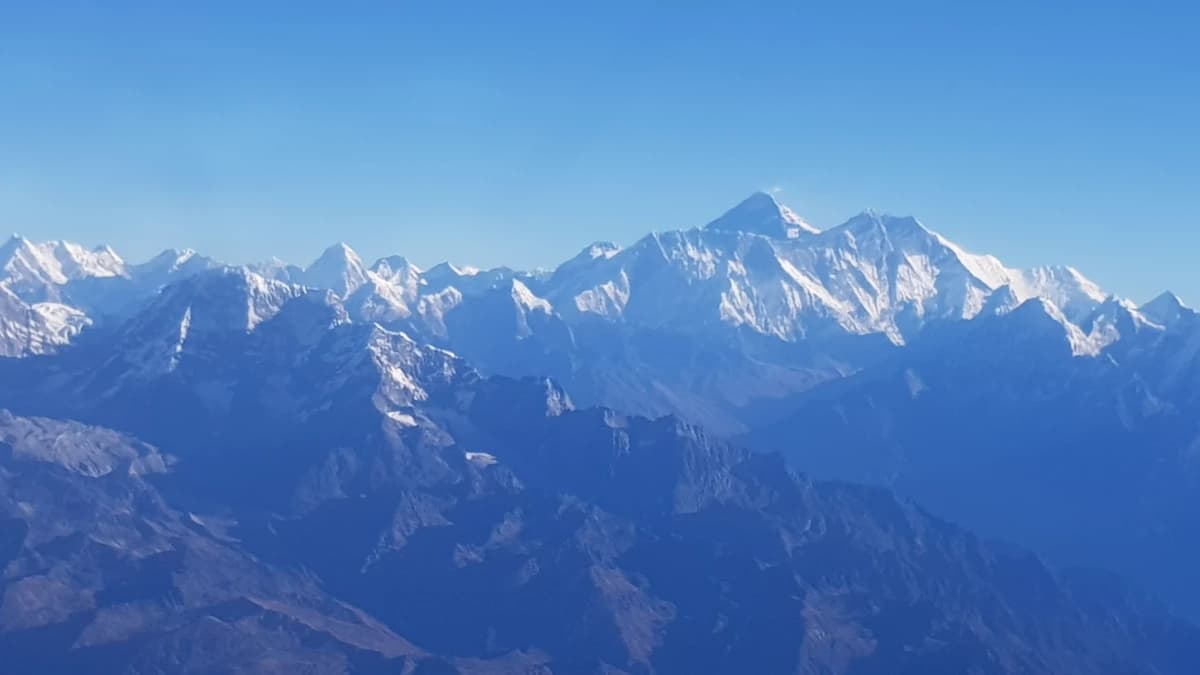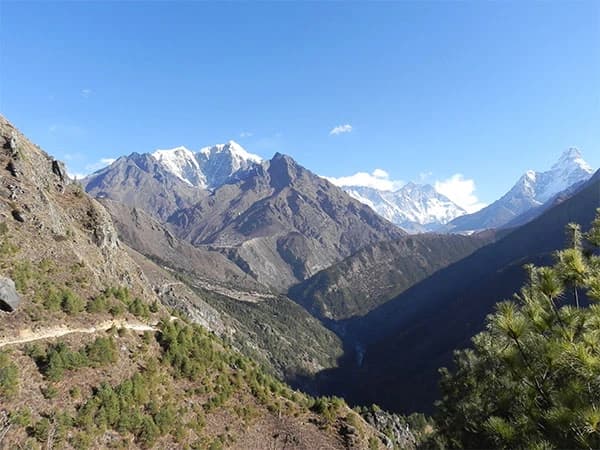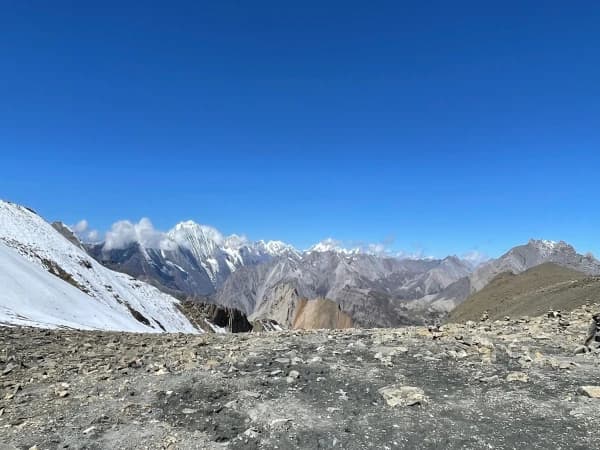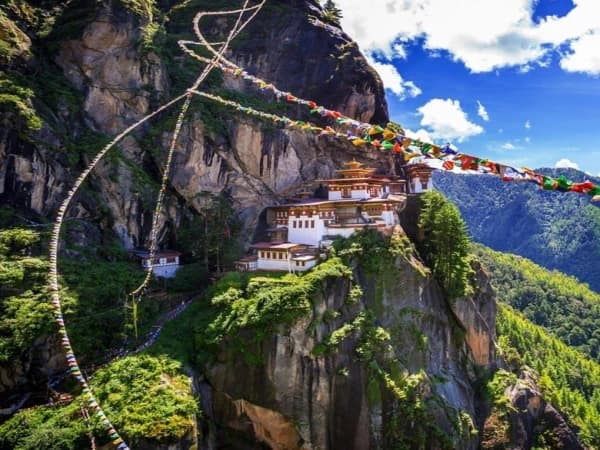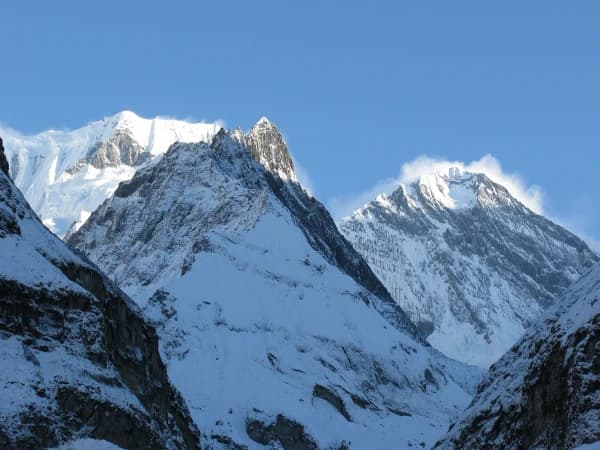Pikey Peak Trekking Difficulty and Itinerary Map Guidance for Beginners
Peaky Peak Trek in Nepal is a lesser-known Himalayan adventure offering breathtaking views of Mount Everest (8,848.86m). In case you are searching for trails that are not crowded, but still offer the view of the world's highest mountain that too without reaching higher altitude, Pikey Peak Trek is for you. This Nepal trek is ideal for hikers craving solitude, encounter with authentic culture, and panoramic mountain views of Mount Kanchenjunga in the east to Mount Dhaulagiri in the west. This off-the-beaten-path route is situated in the Lower Everest region (Solukhumbu).
Pikey Peak Trek 2025/26 ensures a peaceful and immersive experience unlike the more commercialized trekking routes in Nepal. This trek is a moderate-level trek that offers a perfect balance of adventure, comfort, and cultural richness no matter if you are a first time trekker or a seasoned one. Pikey Peak Trek Nepal starts from a small town (Dhap), which is accessible by road from the capital, Kathmandu which you can reach either by public or private transportation. The route of Pikey Peak takes you through villages of Sherpa and Tamang communities, rhododendron forests, yak pastures, and ancient monasteries, all the way to a sunrise summit at Pikey Peak (4,065m), a stunning view point offering the best view of Mount Everest as claimed by Sir Edmud Hillary.
The skyline opens to reveal the world’s highest mountains such as Everest, Lhotse, Makalu, Annapurna, and Gaurishankar as you climb towards the Pikey Peak summit in the soft and golden light of dawn. The prayer flags fluttering in the wind, the 360 degrees Himalayan panorama, and the spiritual atmosphere will leave you speechless making your trekking worth it as this Pikey Peak Trek is a life-changing experience in Nepal.
Nepal Pikey Peak Trek is an ideal choice if you’re planning to trek in Nepal in 2025/26. It is one of the best short treks in the Everest region of Nepal, which requires no internal flights, no extreme acclimatization, no hardship but still offers you the view of the world's highest peak. No matter if you are a solo traveler, a couple on a cultural journey, or a group of peers seeking for escapism with scenes, Pikey Peak will satisfy you. On the trail, the hospitality of local people and in teahouses adds charm to your journey.
Pikey Peak Trek is becoming one of the popular treks among trekkers seeking responsible travel as Nepal continues to promote sustainable and community-based tourism. This trek is not just walking, it’s hiking along with connecting with nature, the land, people there, and ofcourse the mountains. It is the perfect time to discover this underrated route before it gains popularity and is traveled by many.
So if you're planning a Himalayan trek in Nepal for 2025 or 2026, and want to experience the Everest region in a new light, far from the mainstream routes, the Pikey Peak Trek offers everything you could hope for such as natural beauty, cultural authenticity, and unforgettable mountain views.
Highlights of Pikey Peak Trek
- Breathtaking view of Mt. Everest and 7 other 8,000-meter peaks including Lhotse, Makalu, Kanchenjunga, Annapurna, and Dhaulagiri.
- Stunning sunrise from Pikey Peak (4,065m) with a 360-degree Himalayan panorama.
- Authentic Sherpa culture
- Beautiful rhododendron forests and diverse landscapes
- Less-crowded trail
- Warm hospitality in local teahouses, with delicious Sherpa cuisine and cozy accommodations.
- No flight required
- Opportunity to spot Himalayan wildlife like yaks, mountain goats, and exotic birds.
- Ideal for photography and cultural exploration
- Perfect for short treks in Nepal
Why do People Choose Pikey Peak Trek in Nepal?
Nepal Pikey Peak Trek is a perfect choice for travelers wanting to experience the raw beauty of Everest region without the crowds and high acclimatization. One of the reasons why people choose Pikey Peak Trek in Nepal is the unmatched panoramic view of the world’s highest peak, Mount Everet along with surrounding peaks like Lhotse, Makalu, Kanchenjunga, Annapurna, and Dhaulagiri. There’s no double thoughts on why Sir Edmud Hillary claimed the view from Pikey Peak was his favourite in all of Nepal.
People choose Pikey Peak in Nepal because this is an underrated trek and the route remains untouched unlike EBC. Also, this Nepal; trek offers a peaceful and authentic trekking experience. En route, you’ll pass through traditional villages of Tamang and Sherpa communities, where you get to explore the ancient monasteries while enjoying warm hospitality in teahouses run by families. What makes this hike more meaningful is the cultural richness.
Pikey Peak Trek compared to high-altitude adventures, is a short journey which is perfect for travelers having limited time. It takes you around 6 to 9 days to complete this trek where you’ll reach the highest elevation of 4,065 meters having low risk of altitude sickness. This is why, first time trekkers can also hike on the route of Pikey Peak.
Another reason why people choose Pikey Peak Trekking is the accessibility. Unlike Everest Base Camp Trek which requires a flight to Lukla, Pikey trek is accessible by road from Kathmandu. This makes Nepal Pikey Peak Trek more budget friendly and convenient.
Nature lovers and photographers will also find Pikey Peak incredibly rewarding. In spring, the trail comes alive with blooming rhododendrons, while in autumn, the skies are clear and perfect for photography. The changing landscapes from pine forests to open ridges and yak pastures that keep the scenery fresh and captivating every day.
Overall, the Pikey Peak Trek offers a perfect balance of natural beauty, cultural depth, and adventure: all without the need for extreme altitude or busy trails. For those planning a Nepal trek in 2025 or 2026, it’s an underrated gem that promises unforgettable views, genuine cultural encounters, and the serenity of trekking off the beaten path.
What is the Best Time for Pikey Peak Trek Nepal?
The best time for Pikey Peak Trek Nepal is the Spring season (March to May). This season is one of the most beautiful times to trek in the Everest region of Nepal. The skies are generally clear, the trail is covered with blooming rhododendrons, magnolias, and wildflowers, and the weather is mild making it ideal for nature lovers and photographers.
Another best time to hike on Pikey Peak is Autumn Season (September to November). This is the post monsoon season and a popular season for trekking in Nepal as mountain views are clearly seen, weather becomes stable, and skies become clear. The monsoon rain removes dust and haze making air fresh and excellent visibility making it perfect for enjoying Himalayan views from Pikey Peak. temperatures during autumn are perfect for walking, especially in lower elevations.
It is not recommended to trek during winter (December to February) as the weather becomes colder making high possibility of snowfalls in higher elevations. If you’re an experienced trekker, during the winter season, the trail is quieter and offers a unique charm.
Trekking in Monsoon Season (June to August) is a hussle as this season brings heavy rainfall, slippery trails, and cloud-covered views. There is risk of landslides and leeches in the route making it difficult to trek. So, only if you’re a well prepared adventurous trekker, it may be appealing to you.
Is Pikey Peak Trek Difficulty Bearable for Beginners? How Possibility of Altitude Sickness?
Yes, Pikey Peak Trek Difficulty is bearable for beginners. Peaky Peak is a moderate level trek, which can be done by first timers as well as seasoned trekkers searching for less crowded, scenic trails in the Everest region. The trek involves some uphill sections reaching the maximum altitude of 4,065 meters, but still there is lower risk of altitude sickness compared to the Everest Base Camp trek. It’ll take you around 5 to 7 hours a day for 6 to 9 days to complete this trek through forests, villages, and ridgelines. Technical skills or special gears are not required for Pikey Peak Trek as anyone with basic fitness level and a bit of preparation can comfortably complete it. To make your journey much easier, you can hire a guide and porter especially if you are a beginner. Hence, beginners can face the Pikey Peak Trek Difficulty as this is not a hard hike and also complete it.
Compared to Everest Base Camp Trek and other high-altitude treks in Nepal, the risk of altitude sickness in Pikey Peak Trekking is very low. However, crossing the altitude of 3,000 meters bring slight risk of mild symptoms of altitude sickness such as headache, nausea, dizziness, and so on, even shortness of breath can occur in case you hike at a fast pace.
Pikey Peak trek gains altitude gradually (which is a good news for first timers), allowing your body to acclimatize naturally. Most of the time, itineraries are made in such a way that you’ll acclimatize at modern elevations minimizing the chance of AMS. While trekking in Pikey, drink plenty of water, walk at a slow pace, and avoid alcohol to reduce the possibility of altitude sickness.
Although severe altitude sickness is rare on this route, it’s always wise to be aware of the symptoms and inform your guide or group if you feel unwell. With basic awareness and a sensible trekking pace, the chances of serious AMS on the Pikey Peak Trek are minimal.
How to Get to Pikey Peak Trekking Point? What Lodging and Fooding Do You Get En Route of Pikey Peak Trek?
Pikey Point trekking point can be reached by road. The starting point of this trek is Dhap, where you can reach by a local bus from Kathmandu or rent a private vehicle. You’ll witness beautiful landscapes and scenery while on the road. Upon reaching Dhap, the real walking starts.
En route of Pikey Peak Trek, you’ll get basic lodging and fooding. Hence, you have to adjust to the basics while trekking on this trail. You can find local teahouses and lodges with simple rooms of two-bedroom, a pair of pillows and blankets along with shared bathrooms. If required, don’t forget to pack a sleeping bag with you. As for fooding, local Nepali foods prepared from locally grown ingredients are available such as Dal Bhat, Momo, Thukpa, and so on which energises you throughout the trek if you eat properly. Depending on the season, the food also differs.
Is it Compulsory to Hire a Guide and Porter for Pikey Peak Trek? Is Pikey Peak Trek Possible in 5 Days?
It is not compulsory to hire a trekking guide and porter for Pikey Peak trek. But if you want a comfortable journey, do hire them. A licensed and experienced trekking guide will help you navigate the route, pre book the accommodations, educate you along the route, and help you prevent altitude sickness. Especially, if you are a first time trekker in Nepal, a guide will help you a lot. Similarly, a porter reduces your backpack load making you comfortable in walking. You can walk without load and easily if you hire a porter.
In case you have limited time and complete Pikey Peak Trek in just 5 days, there are various registered agencies with 5 Days Pikey Peak Trek Itineraries. Generally, it takes 6 to 9 days to complete this trek but removing acclimatization and cultural exploration days and using private transportation, the itinerary can be reduced to 5 days. So, yes Pikey Peak Trek is possible in 5 days.
What are the Cultural Insights of Pikey Peak Trek Nepal?
Pikey Peak Trek is an opportunity for you to experience the rich and authentic Nepal’s mid-hill communities cultures. As the route takes you through villages of Sherpa and Tamang communities where ancient traditions, languages, and lifestyles have been protected and preserved, you’ll get to learn a lot about culture. This route is quite more peaceful and genuine unlike commercialised trekking routes where you can encounter genuine culture allowing you to connect with the locals in their everyday settings. Don’t forget to visit the ancient monasteries, mani walls, chortens, and prayer flags fluttering along the way which reflects deep-rooted Tibetan Buddhism.
Similarly, while you are accommodated in teahouses and lodges which are locally run, you get the chance to taste the authentic local foods like Sherpa stew, Tibetan bread, and yak butter tea while engaging with warm conversation with the hosts. Trekking Pikey Peak during the right time such as local festivals or rituals gives you a more cultural in depth story of this region. The spinning wheels in a hillside gompa, chants of monks while watching sunset over the Everest, and so on immerse you culturally while on Pikey Peak Trek Nepal.
What are the Permits Required for Pikey Peak Trekking?
Following are the permits required for Pikey Peak Trekking which you can get from a registered trekking agency in Nepal:
- Sagarmatha National Park Permit
- TIMS (Trekkers Information Management System) Card
What Should You Pack for Trekking in Pikey Peak?
- Packing only necessary and low weight is a key for successful trekking. While trekking in Pikey Peak, consider packing the followings:
- Down jacket (for cold mornings and evenings), Lightweight trekking shirts and pants for daytime
- Wool or fleece hat, Warm gloves, Neck gaiter or buff
- Trekking boots (well-broken-in, waterproof), Camp shoes or sandals (for relaxing at teahouses), Woolen and synthetic socks (2-3 pairs each)
- Backpack (30-40L) with rain cover, Daypack (if hiring a porter), Sleeping bag (rated to at least -10°C; some teahouses may provide blankets)
- Headlamp with extra batteries, Sunglasses (UV-protected, due to high altitude), Trekking poles (especially useful on descents), Sunscreen and lip balm (SPF 30+)
- Water purification tablets or filter bottle, Basic first-aid kit (including headache and stomach meds), Wet wipes, toilet paper, hand sanitizer, Snacks (energy bars, nuts, chocolates)
- Power bank (charging is limited and paid at teahouses), Camera or phone with extra storage, Notebook or book for quiet evenings, Travel towel and quick-dry toiletries
What are the Things to be Considered for Pikey Peak Trekking?
- Physical preparation is key, so do some cardiovascular exercise before the journey.
- Travel in the right season if you want to make your trekking worth it..
- Always keep your permits with you.
- If you are a first time trekker, hire a guide and porter even if it's not compulsory for your own safety.
- Pack appropriately
- Stay hydrated drinking plenty of water to prevent yourself from altitude sickness.
- Walk at your own pace. Avoid rushing; steady pacing helps with acclimatization and reduces injury risk.
- There are no ATMs on the trail, so bring enough Nepali rupees for your stay.
- Respect local culture
- Check transport options in advance. Roads to Dhap or Phaplu can be bumpy or delayed; book early if flying.
- Be ready for basic accommodation as tea houses are simple but cozy; hot showers, Wi-Fi, and electricity may cost you extra.
- Leave no trace: Dispose of waste responsibly and help preserve the pristine Himalayan environment.
Conclusion: Alternative Everest Region Short Trek Offering Best Panoramic View
Pikey Peak Trek Nepal is a hidden gem in the Everest region of Nepal that offers the view of the world's highest peak along with panoramic mountain views of Mount Kanchenjunga in the east to Mount Dhaulagiri in the west including Makalu, Lhotse and other towering peaks.. Trekking in Pikey Peak is different from other treks due to its underrated nature, the crowd is less in this trail making this a perfect spot for someone looking for a view of Mount Everest without much preparation.
Being the favorite viewpoint of Sir Edmud Hillary, Pikey Peak Trek is a journey through time and tradition. From Buddhist monasteries draped in prayer flags to Sherpa villages echoing ancient chants, along with teahouses with warm hospitality, this journey is culturally and spiritually rich. Pikey Peak Trek is a moderate level trek making it favourable for anyone who wants to trek in Nepal especially seeking for Everest view. It doesn’t takes long days like other commercial treks and isn’t physically and mentally demanding, which makes this Nepal trek a popular choice for beginners, senior-citizen, and families as well.


